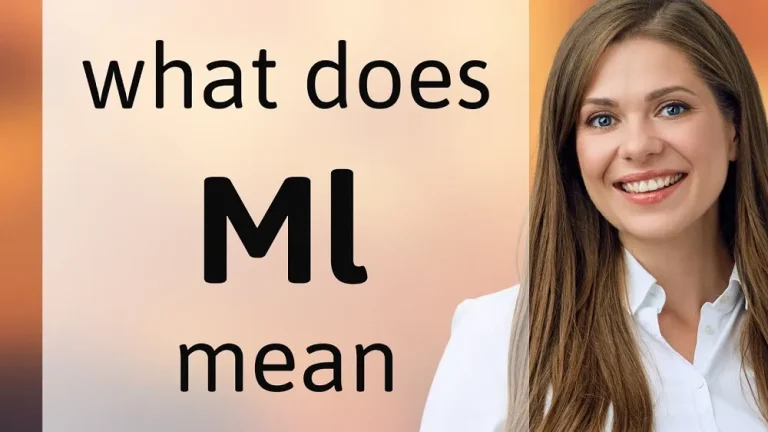In today’s technology-driven world, acronyms and abbreviations habitually flourish in dialogue around cutting-edge developments. A common acronym that expresses interest is ML. If you’ve come across this term in an innovation setting, you’ve probably thought, What Does ML Mean in Text? In this article, we will investigate this address in detail about machine learning (ML) and its impact on content creation, its application and its impact in different industries.
As machine learning plays an increasingly significant role in shaping innovation advancements, it is imperative to understand what ML means in context. With the ability to extract bits of knowledge, computerize forms and improve decision-making, ML is at the cutting edge of how current-day frameworks connect and analyze literary data.
What Does ML Mean in Text? A Definition of Machine Learning
To answer the address specifically, What Does ML Mean in Text? ML refers to a Artificial Intelligence (AI) category that focuses on computations that allow frameworks to learn from data. These frameworks advance their execution over time based on engagement without the need for express programming. The term “machine learning” is often used in settings where frameworks are designed to recognize patterns in information, make predictions, or actually take actions based on the information they encounter. In particular, in terms of content, machine learning refers to the application of these computations to the analysis, translation, and production of human dialects. This preparation includes understanding and preparing written or spoken words in a way that reflects human understanding. ML frameworks are used to control everything from spam channels to predicate content frameworks and indeed modern chatbots and virtual colleagues like Siri or Alexa.The Basics of Machine Learning
Before diving deeper into the specifics of how machine learning connects to content, it’s helpful to get the essentials of innovation. Machine learning is a broad field, and at its core includes performing computations on datasets to distinguish designs, make predictions, and learn independently. This field can be divided into several special categories:1. Administered Education
Supervised learning is one of the most common types of machine learning. In directed learning, computations are prepared in labeled datasets, meaning that the data comes with predefined names that show the correction results for each case. In case, in a content classification assignment, an administered display can be prepared on the dataset of emails labeled as “spam” or “not spam”. These labeled images demonstrate the employment of learning spam detection designs from non-spam emails After preparation, the detector can classify modern, ambiguous emails as spam or not spam based on the patterns it learns at that time.2. Unsupervised learning
In unsupervised learning, the show is not accompanied by labeled information. Instep, it will discover the design and connection inside the information it possesses. This is valuable for tasks like clustering, where the show groups similar objects together. In the case of content mining, unsupervised learning can be used to distinguish clusters of comparable archives based on their content without any predefined categories.3. Support for learning
Reinforcement learning (RL) varies from both directed and unsupervised learning. In RL, an expert learns to make choices by interacting with his environment and receiving criticism through rewards or punishments. Over time, the operator learns to optimize his operations to maximize overall compensation. While support learning is often associated with mechanical technology, gaming and autonomous vehicles, it has also been investigated in general dialect preparation (NLP) for tasks such as discourse generation.What Does ML Mean in Text? Machine Learning in Natural Language Processing
Now that we have a basic understanding of machine learning, let’s focus on the application of ML to content. When we converse around ML on the subject, we often point to Common Dialect Preparing (NLP), a category of AI that deals with how computers can be instructed to receive and translate human language.- In ML Text Meaning: content discussions, “ML” is regularly shortened to “much love”. It is an inviting expression used to express affection or gratitude to someone, comparable to saying “love you” or “sending you love”.
- What do ml mean in text?: “ML” can stand for “my horror” in some texting settings, especially in casual conversations. It is a statement of regret or an affirmation of guilt, used when someone has to take responsibility for something minor.
- Text classification
- Named Substance Recognition (NER)
- Sentiment analysis
- Text generation

